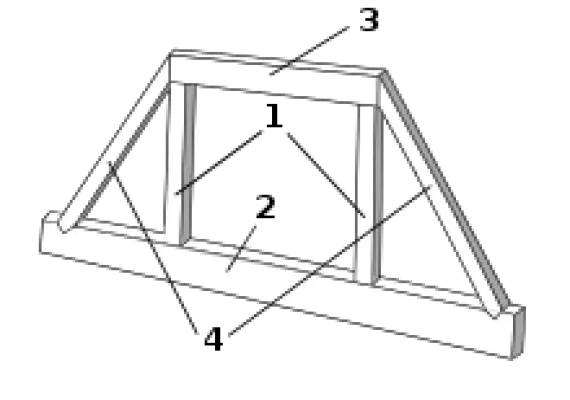What Is Cribbing In Construction?
What Is Cribbing In Construction?
Cribbing is a temporary structure utilized in construction to hold heavy loads. It can be made of wooden beams or concrete blocks and is not intended to remain permanently. Cribbing is utilized in building bridges, roads, and buildings.
There are two types of cribbing, horizontal and vertical. Horizontal cribbing holds heavy loads from above while vertical cribbing supports loads from the side. Box cribbing, a type of horizontal cribbing, is exceptional in holding extremely heavy loads.
It’s named after its box-like shape and is formed by interlocking cribs stacked one on top of the other. To increase stability and weight, the boxes can be filled with sand, gravel, or concrete. Because of its box shape, it can bear loads from multiple directions at the same time.
Cribbing Construction Materials
Wood and plastic are the most popular materials for cribbing construction. Wood cribbing blocks are usually made of softwoods such as Douglas Fir or Southern Pine and the strength depends on factors like species, moisture content, length and thickness.
Plastic and steel are sturdier and resistant to chemical corrosion, but wood remains a popular choice. Concrete is also a practical material for crib walls as it is strong enough to hold a heavy load, doesn’t rot or deteriorate and is ideal for long-term projects.
However, it offers less flexibility than wood and doesn’t absorb water which can weaken the crib wall’s ability to support heavy equipment.
Cribbing Construction Safety Risks
For cribbing construction, it is important to use stable and flexible woods that can support heavy weights. However, if these woods start making noises, it is a sign that the cribbing is becoming defective and needs to be replaced immediately.
Brittle woods should be avoided as they are prone to splitting or snapping under heavy loads, which can lead to equipment damage and harm to workers. Aerial lift operators need to be extra cautious when constructing cribbing as the top-heavy loads and height of some aerial lifts can pose a danger.
It is important to only carry out wood cribbing under professional and certified supervision. Proper training is crucial for operators and workers to recognize and avoid hazards in cribbing construction and aerial lifts. Aerial lift training equips them with the skills to safely perform tasks on and off cribbing.
How To Build A Cribbing
Building a box crib is a straightforward process that requires minimal materials. The necessary supplies are 4×4 lumber, 2×4 lumber, deck screws, drill, tape measure, saw horses (optional), level (optional), and stakes (optional).
#4 deck screws are the recommended type of fastener as they are large enough to pierce the lumber without splitting it, yet small enough to be driven by hand. A drill can be used for drilling pilot holes and driving screws, but it is not essential.
If you do not have a saw horse or level, you can use stakes and string to maintain level and stability during the building process.
Before beginning the assembly, it is important to treat the lumber. Cut the 4×4 lumber into 8 pieces that are 3 feet long and 8 pieces that are 2 feet long for the upright posts. Cut the 2×4 lumber into 16 pieces that are 2 feet long and 32 pieces that are 1-foot-long for the horizontal crosspieces.
To start, place four of the 3-foot 4×4 pieces in a square on a level surface and fasten them together at the corners using #8 deck screws driven every 6 inches along the seams. Repeat this step to make a second square.
Next, attach the 2-foot 4×4 pieces between the uprights on each square, using #8 deck screws every 6 inches along the seams.
After attaching all sides except the top and bottom, lay out the crosspieces on top of the frame, making sure they are evenly spaced. Fasten them in place using #8 deck screws every 6 inches along the seams. Attach the remaining 2-foot 4×4 pieces between the corresponding uprights on each side of both squares. Lastly, cut 4 more 2-foot crosspieces and attach them along the top of the structure using #8 deck screws.
The box crib is now complete. For added stability, you can fill each box with sand, gravel, or concrete. This sturdy box crib is a valuable tool for construction projects involving heavy loads, as its robust rectangular shape is well-suited for supporting heavy weight. By following these simple steps, you can build your own box crib in no time.
